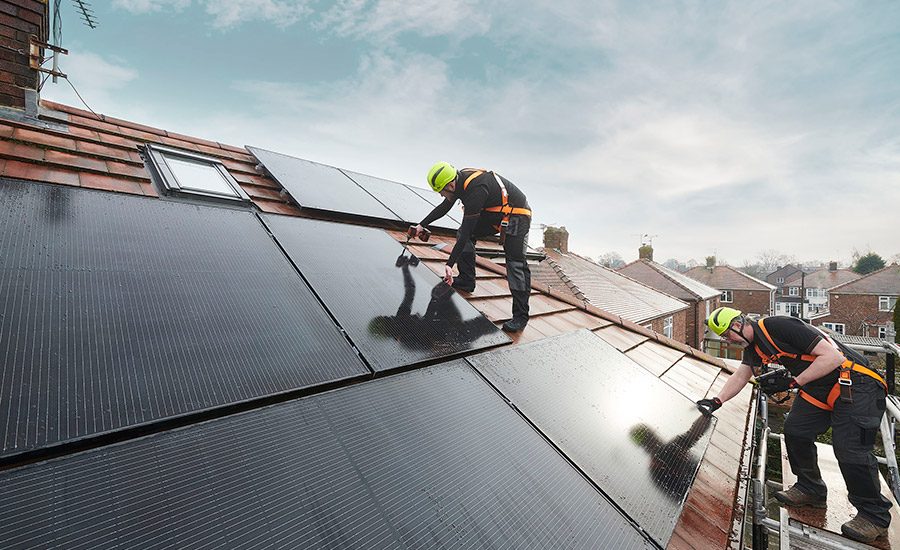Sustainable Technologies and Growth in Asia-Pacific Drive Adhesives and Sealants Market
Demand for innovative adhesive and sealant technology is increasing as industries look to implement eco-friendly product designs.

Credit: Userba011d64_201, iStock / Getty Images Plus

Credit: sturti, E+


Adhesive material holds two surfaces together, providing adhesion and durability. They are ubiquitous in our lives, from the glue that holds smartphone parts together to the sealants that waterproof homes. Adhesives and sealants are essential in many industries and play an important role in bonding, joining, and sealing applications. They come in many forms, including liquids, pastes, tapes, and films, and fall into categories such as epoxy, cyanoacrylate, and polyurethane adhesives. This multifunctional material is widely used in construction, automotive, aerospace, electronics, and appliances. Sealants, conversely, are used to create barriers against water or oil or seal gaps and seams. Most are elastomeric, providing flexibility and durability. Silicone, polyurethane, and acrylic sealants come in several types, each specifically designed for specific applications such as weatherproofing, insulation, and structural bonding. Both adhesives and sealants have advantages such as ease of use, versatility, and environmental performance. Their use can increase productivity, reduce installation costs, and extend the service life of structures and equipment. Continuous improvement of design and environmentally friendly options demonstrate the evolution of adhesives and sealants in meeting the needs of the industry. The significant applications of adhesives and sealants are paper and packaging, consumer and DIY, building and construction, furniture and woodworking, footwear and leather, automotive and transportation, medical, and others.
Market Catalysts
The demand for adhesives in the automotive and aerospace industries is driven by strategies to improve fuel efficiency and overall performance. In the automotive world, lightweight materials such as aluminum and high-strength plastics are becoming increasingly popular owing to their ability to reduce vehicle weight and improve fuel economy. Advanced adhesives play an essential role in bonding these materials by providing structural integrity without the added weight of mechanical components. The growth is attributed to the increasing use of adhesives in automotive assembly processes, particularly for lightweight materials, as manufacturers seek to meet stringent emissions standards and enhance vehicle performance. Similarly, in the aerospace industry, the use of advanced adhesives has become integral to the construction of lightweight composite structures. These adhesives contribute to the development of fuel-efficient aircraft by reducing overall weight while maintaining structural integrity. Based on the International Organization of Motor Vehicle Manufacturers, the total number of vehicles manufactured across the globe was around 23,418,078 units in 2022, witnessing a 6% growth from 2021 with vehicle production of 23,091,693 units. The data reflect a significant and sustained demand for automotive and aerospace industries, driven by the imperative of lightweight design for fuel efficiency, leading to a high demand for adhesives and sealants. As these industries prioritize advancements in materials and manufacturing processes, the demand for adhesives will remain in an upward trend.
Current Market Shifts
The adhesives and sealants industry is changing significantly owing to growing demand for environmentally friendly products. Consumers and businesses are focusing on sustainability, leading companies to produce adhesives and sealants that reduce environmental impact. Most of these standards aim to reduce VOC emissions. As global environmental regulations become more stringent, there is an increasing demand for adhesives and sealants that reduce VOC emissions. This need is critical in the construction, automotive, and packaging sectors, where compliance with environmental standards becomes essential.
Additionally, bio-based and renewable materials are gaining importance in the adhesive and sealant industry. Manufacturers are exploring other sources, such as plant-based polymers, soy, starches, and other bio-derived ingredients, to replace petrochemical ingredients. This change aligns with many sustainability goals to reduce reliance on limited resources and reduce the carbon footprint of adhesive products.
As per the National Institute of Health studies, the construction industry uses green adhesives for applications such as flooring, roofing, and insulation. In the automotive industry, where lightweight materials are used to increase fuel efficiency, bio-based adhesives are necessary for bonding products together without compromising integrity. The importance of security is more than a business tactic; it demonstrates a broad social and business commitment to environmental responsibility. The global adhesives and sealants market is expected to continue this trend, with durable products gaining a larger market share in the coming years.
Asia-Pacific Leading Global Demand
The dominant force in the global market for adhesives and sealants lies in the Asia-Pacific region, propelled by burgeoning demand across various sectors such as packaging, construction, automotive, and healthcare, notably in China, India, and Japan. The Indian Paint Association forecasts that India's paint and coating industry is poised to exceed $12.34 billion in the next five years, up from the current level of $7.70 billion. This projection aligns with the sector's consistent double-digit compound annual growth rate, which it has sustained over the past few years, excluding the years 2020 and 2021. Heavy investment in the construction sector drives the growth in the demand for paint and coatings. This trend will play an important role in rising demand for sealants and adhesives in these markets. With the increase in construction, infrastructure and housing, the need for reliable integration and solutions has gained importance. Adhesives and sealants are vital materials in construction and perform essential functions such as fixing various materials, improving structural integrity, and protecting building assets from the environment. Hence, increased investment in construction reflects strong growth in the construction and housing sectors and demand for products such as quality adhesives and sealants, which contribute to structural integrity and protection.
According to World Bank Data, China is experiencing rapid residential and commercial construction growth, driven by a burgeoning economy and sustained urbanization efforts. The data target a 70% rate by 2030, and this is a significant contributor to the region's adhesive industry. Elevated building activities in China are anticipated to spur demand for adhesives in the region. Industries such as cosmetics, food and beverage, and consumer goods in Asia-Pacific are actively innovating, increasing production. This increases the demand for attractive packaging strategies to captivate consumers. According to VMR Analysis, the packaging sector in India constitutes the largest end-user segment, accounting for about 67% of total adhesive usage. Additionally, the region is witnessing substantial efforts to boost the automotive sector, particularly in electric vehicles (EVs), with Japan, for instance, exporting a significant number of EVs in 2022. Construction activities are resurging in the region following eased lockdown measures, with a strong focus on infrastructure development, projected to witness increased funding in the forecast period. South Korean builders, in particular, secured overseas building orders exceeding $30 billion for the third consecutive year in 2022, driven by robust demand from North America and Asia-Pacific regions. These dynamic market trends are poised to substantially impact the growth trajectory of the adhesives and sealants market in the region throughout the forecast period.
Future Market
According to Verified Market Research, the global adhesives and sealants market was valued at $68.74 billion in 2023 and is projected to reach $91.96 billion by 2031, rising at a compound annual growth rate of 3.64% from 2024 to 2031. The future of the global adhesives and sealants market will be shaped by continuous growth and change. The main drivers will be the construction and automotive industries, where adhesives are used for structural integrity and fastening materials. Significant shifts towards sustainability are evident as companies invest in environmentally friendly designs, bio-based ingredients, and reduced VOC emissions. This in line with the rising global focus on environmentally responsible practices and stringent regulations. New technological advances, including self-healing bright stickers and adaptive connectivity solutions, require redefining the workplace. As the Asia-Pacific region becomes a business and infrastructure hub, the demand for adhesives and sealants is also increasing, providing a vast market. Additionally, expanding applications in various fields, such as medical devices and electronics, demonstrate this material's versatility and flexibility. The future of the adhesives and sealants market relies on the capacity to adapt to evolving circumstances within the market, the ability to meet safety needs, and the ability to maintain innovation to ensure it remains stable and strong in the global market.
Learn more about Verified Market Research and its report on the adhesives and sealants market at verifiedmarketresearch.com/product/adhesive-sealants-market.
Sources:
1. International Organization of Motor Vehicle Manufacturers (OICA)
2. World Bank Data
3. Organization for Economic Co-operation and Development (OECD)
4. National Institute of Health (NIH)
5. Indian Paint Association (ICPA)
6. American Coatings Association (ACA)
7. The Adhesives and Sealants Association (TASA)
8. Adhesive and Sealant Council (ASC)
9. Association of the European Adhesive & Sealant Industry (FEICA)
10. Trade Statistics for International Business Development
11. International Journal of Environmental Research and Public Health
12. The International Trade Administration (ITA)
13. Market Player Websites
Looking for a reprint of this article?
From high-res PDFs to custom plaques, order your copy today!










